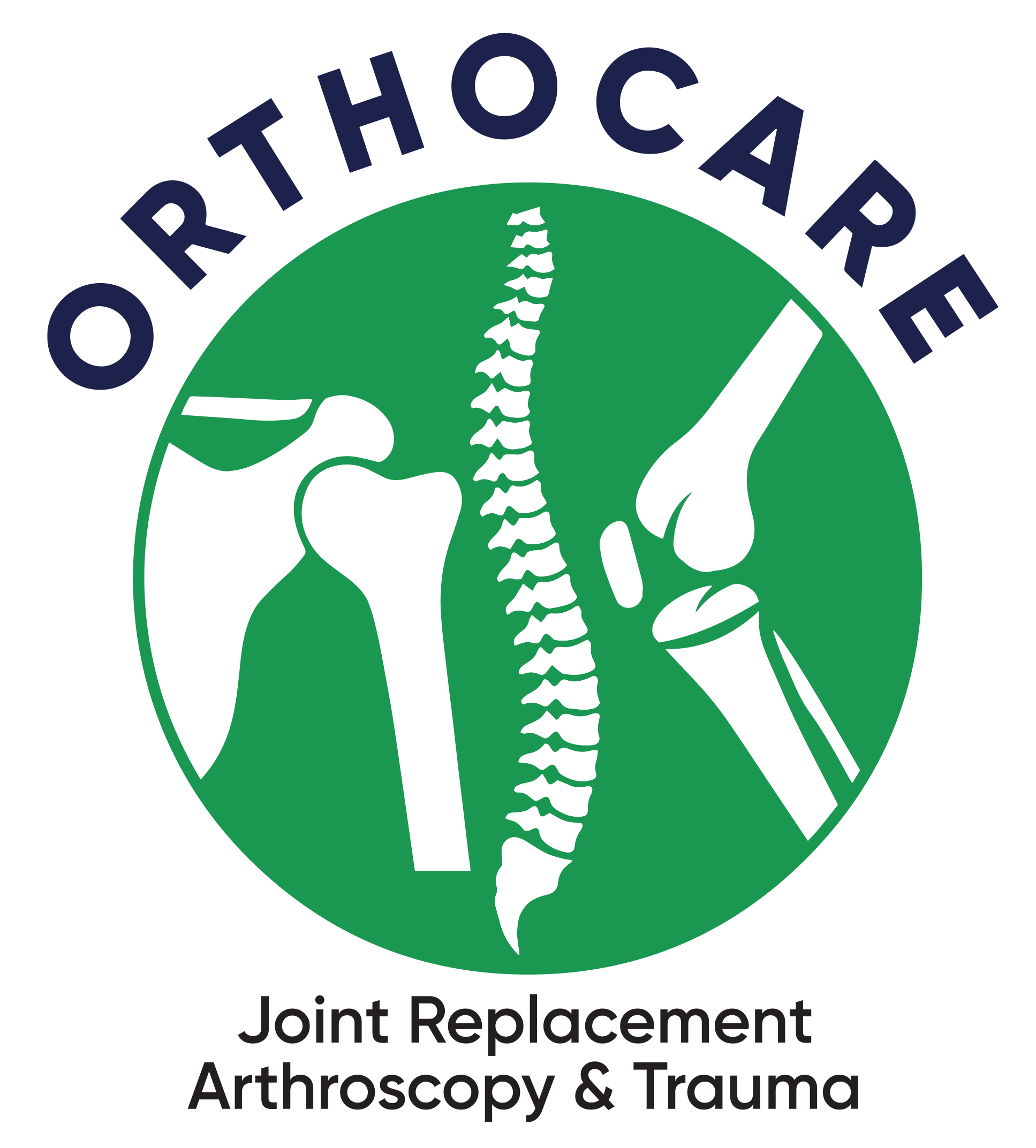Knee Replacement Surgeon in Bangalore
Best Knee Replacement in Bangalore
If you’re experiencing severe knee pain, stiffness, or swelling, and non-surgical treatments have failed to provide relief, you may be a candidate for Total Knee Replacement Surgery in Bangalore. Dr. Chethan Nagaraj is a highly experienced and skilled orthopedic surgeon in Bangalore who specializes in performing knee replacement surgery.
What is Total Knee Replacement Surgery?
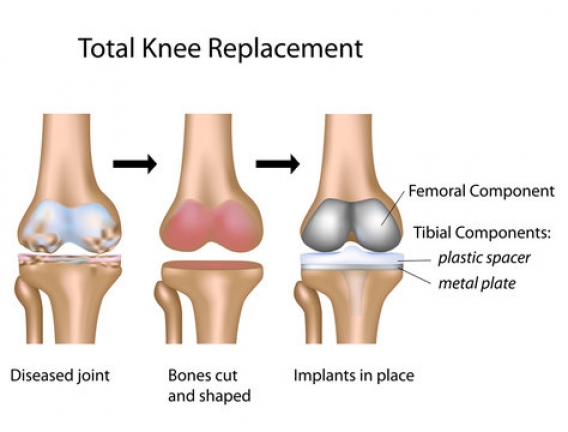
Total Knee Replacement Surgery, also known as Knee Arthroplasty, is a surgical procedure that involves replacing the damaged or diseased knee joint with an artificial joint made of metal, plastic, or ceramic materials. The procedure aims to relieve pain, improve mobility, and enhance the overall quality of life of the patient.
If you are a resident of Bangalore and suffer from serious knee disorder and pain, consult Dr. Chethan Nagaraj. He is one of the leading and best knee replacement doctors in Bangalore. For more details about his treatment approach, contact now!
When is Total Knee Replacement Surgery needed?
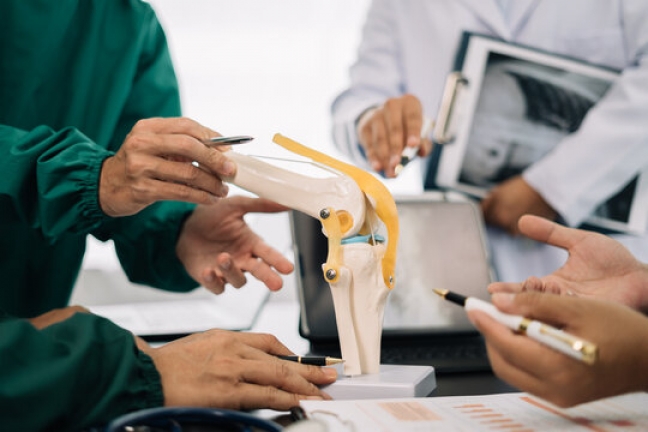
Total Knee Replacement Surgery is typically recommended for patients who suffer from severe knee pain, stiffness, and loss of function caused by conditions such as osteoarthritis, rheumatoid arthritis, or post-traumatic arthritis.
Other conditions that may require Knee Replacement Surgery in Bangalore include:
1- Osteonecrosis
2- Ligament or cartilage tears
3- Bone tumors or fractures
4- Knee deformities
How is Total Knee Replacement Surgery performed?
Dr. Chethan Nagaraj performs Total Knee Replacement Surgery in Bangalore under general anesthesia.
The surgical procedure involves the following steps:
1- The damaged knee joint is exposed through an incision.
2- The damaged bone and cartilage are removed, and the surfaces of the knee joint are prepared to receive the artificial joint.
3- The artificial joint is then attached to the bone using special bone cement or screws.
4- The incision is closed, and the patient is moved to the recovery room.
Components of a Knee Replacement Surgery
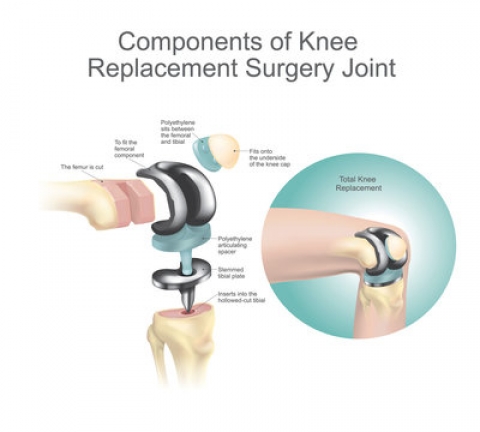
- Minimally invasive approach to the joint
- Assessment of damage to the joint surface and stability of ligaments
- Careful resurfacing of joint surface with minimal bone cuts
- Proper ligament balancing
- Insertion of new prosthetic implants of the highest quality
- Proper hemostasis and wound closure
When done well with the components placed in a perfectly balanced position, using the minimally invasive approach, the new joint will function very well, providing excellent pain relief, near-normal function, and very long durability.
Best knee doctors in Bangalore will follow the above-mentioned steps for a successful knee replacement surgery.
Understanding Knee Joint
The knee joint consists of three bones namely:
- Femur (Thighbone)
- Tibia (Leg bone)
- Patella (Knee cap).
There are 3 compartments namely:
- The Medial Tibiofemoral Joint (inner side of the knee)
- lateral Tibiofemoral Joint (outer side of the knee), and
- The Patellofemoral joint (front of the knee)
Knee Replacement Surgery Doctor in Bangalore
Total knee replacement surgery in Bangalore and elsewhere involves replacing both the medial and lateral Tibiofemoral joint.
Sometimes, depending on the involvement and other patient factors even the patella is resurfaced. The entire femoral and tibial articular surface is resurfaced. The femoral surface is fitted with a metal component usually made of Cobalt-Chromium alloy, which is fixed to the bone with the help of bone cement.
The tibial surface is resurfaced and a metallic component (usually made of either titanium or cobalt-chromium alloy) is fixed to the tibia using bone cement. Then an articulating polyethylene insert is fixed onto the tibial component.
Now, the new joint articulating surface is between the metal component of the femur and the polyethylene insert of the tibia. In some cases, the patella is resurfaced using a polyethylene component which is fixed to the patella using bone cement.
The ACL is sacrificed routinely, the PCL is either preserved or sacrificed based on the severity of knee damage. It is very important to achieve a good ligament balance between the MCL and the LCL of the knee, and it is important to achieve excellent flexion-extension balance, so that the joint is very stable, yet providing for very good mobility and longevity of the joint.
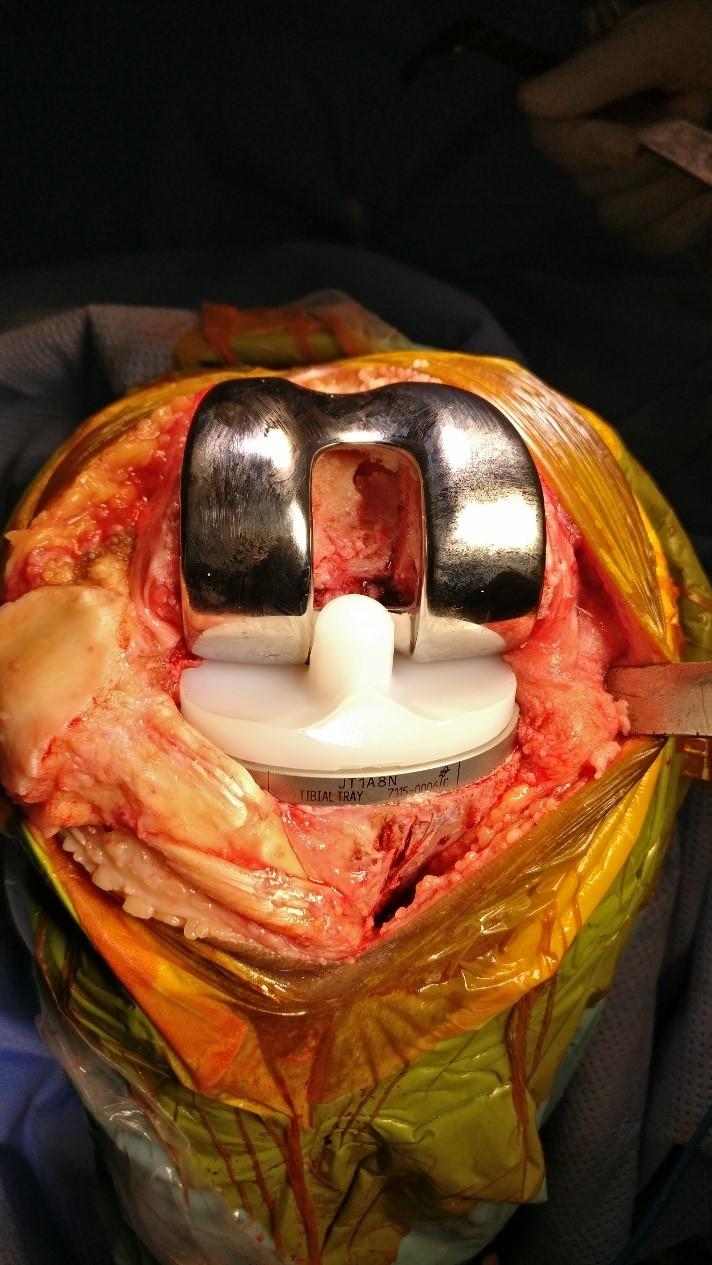
There are two basic types of Total Knee Replacement implants:
- PCL retaining
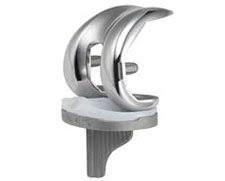
2. PCL sacrificing
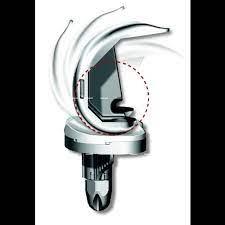
What kind of implants suit your knee best is decided by your surgeon based on the extent of damage to the knee, the available bone stock, age of the patient, and other patient variables.
There are other variables such as fixed bearing and mobile bearing implants. Your surgeon is the best person to decide which of these suit your knee best.
Unicompartmental Knee Replacement in Bangalore
We have already discussed about the types of bones in the knee joint and the three compartments above.
Unicompartmental knee replacement Surgery mostly refers to resurfacing only the medial tibiofemoral joint surface.
This type of surgery is indicated in patients with isolated medial compartment arthritis. Also, it is imperative that all the ligaments of the knee are intact.
If the knee ligaments are torn or stretched out, unicompartmental knee replacement cannot and should not be performed. Also, Uni knees should be avoided in obese patients and people with gross deformities.
So with a proper patient selection and after proper examination and necessary investigations (X-Rays and MRI), if your knee shows significant arthritis only in the medial compartment, with intact ligamentous stability, you could undergo unicompartmental knee replacement.
The advantages of unicompartmental knee replacement are:
- Since the very minimal joint surface is resurfaced and since the ligaments are intact, the patient feels very much like a normal knee after surgery,
- The rehabilitation is quicker
- Patients are even able to squat most of the time.
Revision Knee Replacement Surgery in Bangalore
Knee replacement surgery has excellent outcomes and very long durability. However, sometimes the knee replacement fails due to various reasons. A few of them are :
- Wearing out of the artificial knee, particularly the polyethylene (plastic) component
- Infection
- Loosening of the implants which are fixed with bone cement
- Wrong Alignment of the components
- Ligamentous laxity or imbalance
- Injuries to the knee causing fractures
Revision knee replacements surgery can be very frustrating for the patients, especially if it happens within a few years of the primary surgery.
The causes for failure can sometimes be multi-factorial, including patient factors and surgeon factors. Follow your surgeon’s instructions carefully after a primary knee replacement in order to prevent chances of early revision.
If, unfortunately, the primary knee has failed, discuss with your Total knee replacement surgeon in Bangalore the reasons for failure. Rectifying a failed knee, especially an infected knee, can be an arduous task. It needs patience, both on the part of the surgeon and the patient.
You need to choose wisely about where and by whom you need to get your knee revised. Ideally, it should be by a knee specialist with following characteristics:
- Adequate training
- Reasonable experience
- Excellent Infrastructure and setup
- Someone who gives personal care
The process of revision can be done in a single-stage or two-stage depending on your surgeon’s decision and patient factors.
- In a single-stage revision, the components are removed, bone defects assessed and new knee implants used depending on the defects to ensure a very well aligned and balanced knee.
- In the case of two-stage surgery, in the first stage, the implants are removed and the antibiotic spacer is inserted. After a few weeks, the knee joint is opened again and the spacer removed and new knee implants are used to create a new joint.
In order to compensate for bone defects and to gain better stability, such revision surgeries often require the use of additional components such as stem, wedges, allografts, and constrained implants.
Also, the surgical duration is much longer compared to primary total knee replacement surgery. Owing to these factors, revision surgeries are usually much more expensive than a primary knee replacement.
Also, owing to the use of constrained implants, revision knees are usually not as comfortable as primary knees and the longevity is also lesser.
The best way to prevent a Revision knee replacement is a well-done, perfectly aligned, meticulously balanced primary knee replacement, with proper post-operative rehabilitation.
Computer Navigation in Total Knee Replacement
- Computer navigation in knee replacement is advancement over conventional replacement techniques aimed at improving the accuracy of prosthetic implantation and at furthering efforts towards improving the longevity of the replaced joints and at minimizing surgical errors.
- With the aid of special computers and infra ray cameras, we create a virtual three-dimensional model of the patient’s knee.
- This helps to ensure minimal bone cuts, accurate placement of the new knee, and better soft tissue balancing.
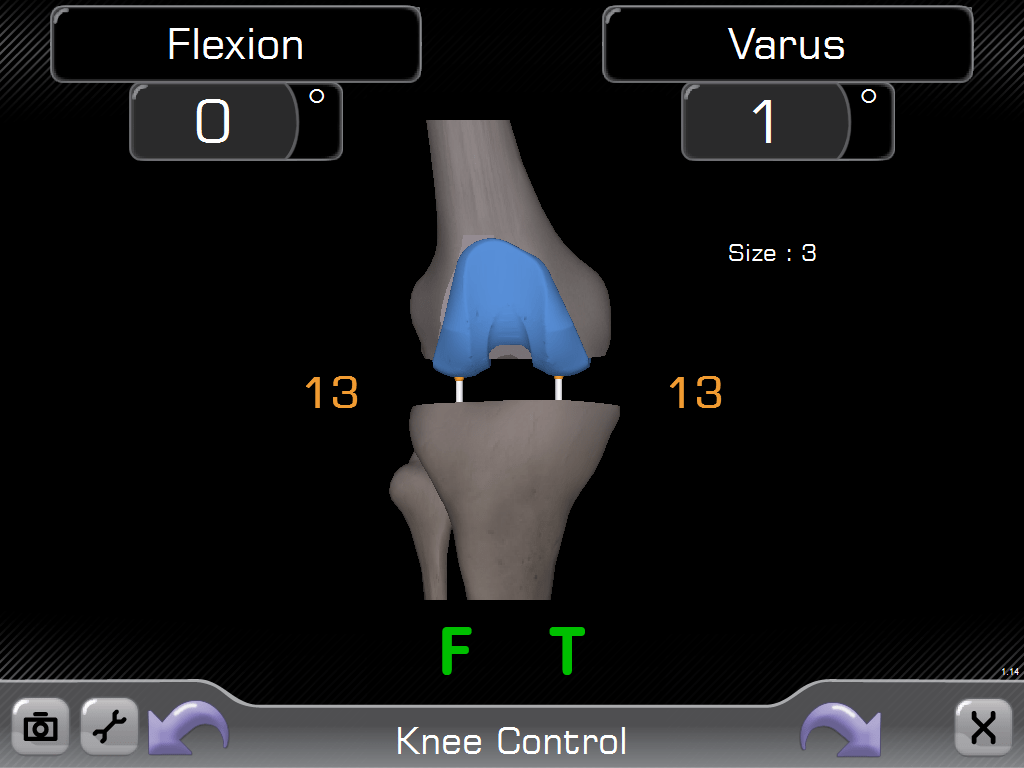
There are additional benefits of computer navigation that includes:
1- Reduced blood loss
2- Reduced pulmonary complications, and
3- Useful for patients with gross and extra-articular deformities.
With proper training, expertise, and experience and with the availability of expensive equipment, Orthocare is able to ensure the best outcomes in knee replacement with the use of advanced technology like computer navigation, compared to non navigated replacements.
Why You Should Visit Dr. Chethan Nagaraj for Knee Replacement Surgery?
- Dr. Chethan Nagaraj is one of the leading, trusted and best knee specialists in Bangalore.
- He completed his Masters in Orthopaedics from Madras Medical College, Chennai
- He is an experienced knee specialist who has worked at prestigious hospitals like Jai Prakash Narayan Apex Trauma Center, AIIMS, New Delhi.
- He has done Accredited Fellowship Training Program in Australia and New Zealand and gained expertise at Computer Navigated Joint Replacement and Arthroscopy.

DR. CHETAN NAGARAJ
About Dr. Chethan Nagaraj
Dr. Chethan Nagaraj is one of the Top & Best Orthopedic surgeons in Bengaluru. He is an expert in Computer Navigated Joint replacement surgeries. He has further perfected Joint replacement and Arthroscopy.
